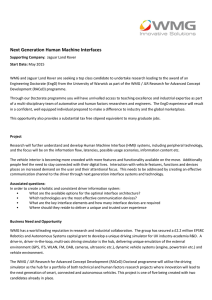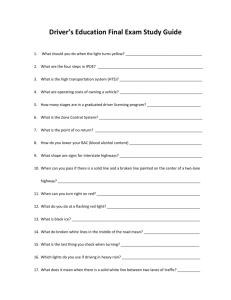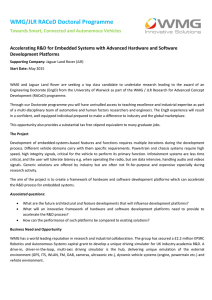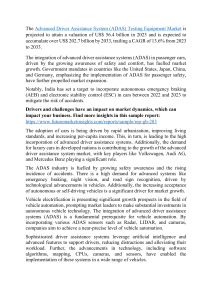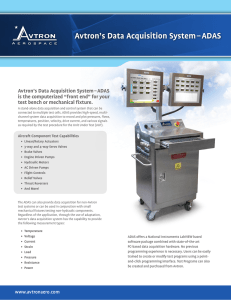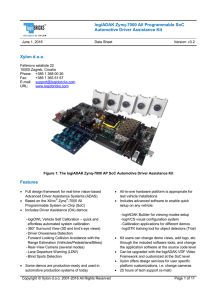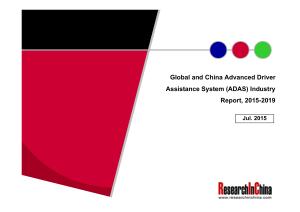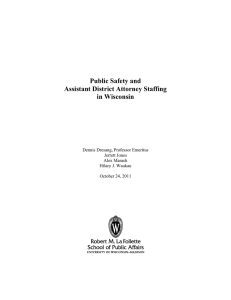Research Towards Advanced Driver Assistant Systems
advertisement
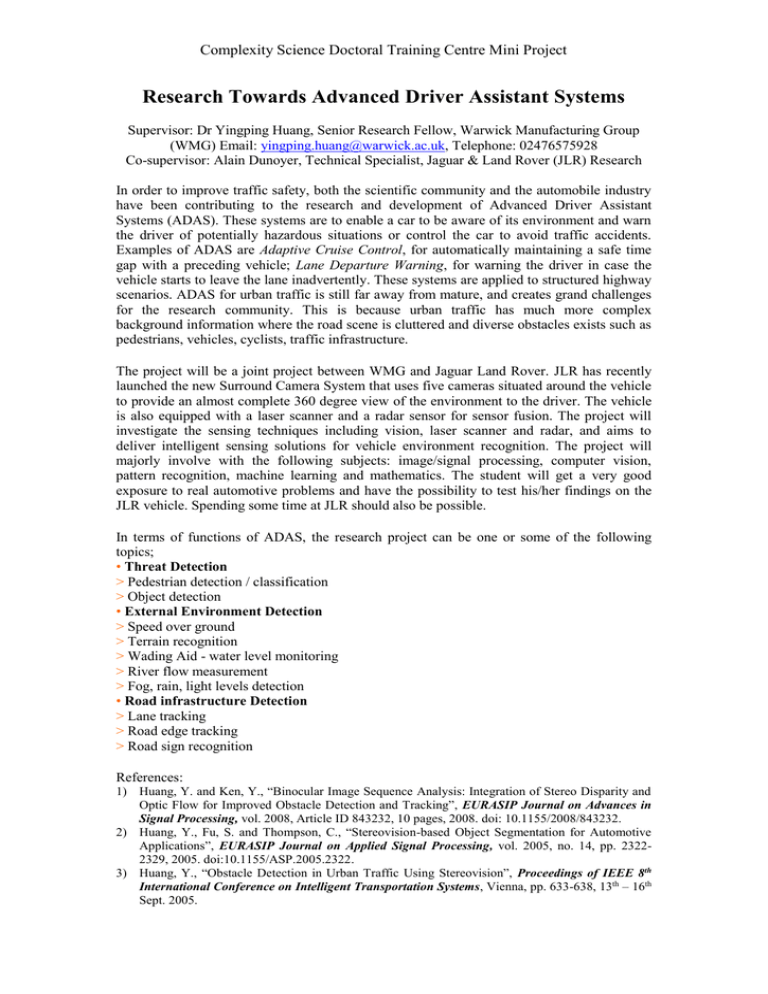
Complexity Science Doctoral Training Centre Mini Project Research Towards Advanced Driver Assistant Systems Supervisor: Dr Yingping Huang, Senior Research Fellow, Warwick Manufacturing Group (WMG) Email: yingping.huang@warwick.ac.uk, Telephone: 02476575928 Co-supervisor: Alain Dunoyer, Technical Specialist, Jaguar & Land Rover (JLR) Research In order to improve traffic safety, both the scientific community and the automobile industry have been contributing to the research and development of Advanced Driver Assistant Systems (ADAS). These systems are to enable a car to be aware of its environment and warn the driver of potentially hazardous situations or control the car to avoid traffic accidents. Examples of ADAS are Adaptive Cruise Control, for automatically maintaining a safe time gap with a preceding vehicle; Lane Departure Warning, for warning the driver in case the vehicle starts to leave the lane inadvertently. These systems are applied to structured highway scenarios. ADAS for urban traffic is still far away from mature, and creates grand challenges for the research community. This is because urban traffic has much more complex background information where the road scene is cluttered and diverse obstacles exists such as pedestrians, vehicles, cyclists, traffic infrastructure. The project will be a joint project between WMG and Jaguar Land Rover. JLR has recently launched the new Surround Camera System that uses five cameras situated around the vehicle to provide an almost complete 360 degree view of the environment to the driver. The vehicle is also equipped with a laser scanner and a radar sensor for sensor fusion. The project will investigate the sensing techniques including vision, laser scanner and radar, and aims to deliver intelligent sensing solutions for vehicle environment recognition. The project will majorly involve with the following subjects: image/signal processing, computer vision, pattern recognition, machine learning and mathematics. The student will get a very good exposure to real automotive problems and have the possibility to test his/her findings on the JLR vehicle. Spending some time at JLR should also be possible. In terms of functions of ADAS, the research project can be one or some of the following topics; • Threat Detection > Pedestrian detection / classification > Object detection • External Environment Detection > Speed over ground > Terrain recognition > Wading Aid - water level monitoring > River flow measurement > Fog, rain, light levels detection • Road infrastructure Detection > Lane tracking > Road edge tracking > Road sign recognition References: 1) Huang, Y. and Ken, Y., “Binocular Image Sequence Analysis: Integration of Stereo Disparity and Optic Flow for Improved Obstacle Detection and Tracking”, EURASIP Journal on Advances in Signal Processing, vol. 2008, Article ID 843232, 10 pages, 2008. doi: 10.1155/2008/843232. 2) Huang, Y., Fu, S. and Thompson, C., “Stereovision-based Object Segmentation for Automotive Applications”, EURASIP Journal on Applied Signal Processing, vol. 2005, no. 14, pp. 23222329, 2005. doi:10.1155/ASP.2005.2322. 3) Huang, Y., “Obstacle Detection in Urban Traffic Using Stereovision”, Proceedings of IEEE 8th International Conference on Intelligent Transportation Systems, Vienna, pp. 633-638, 13th – 16th Sept. 2005.


